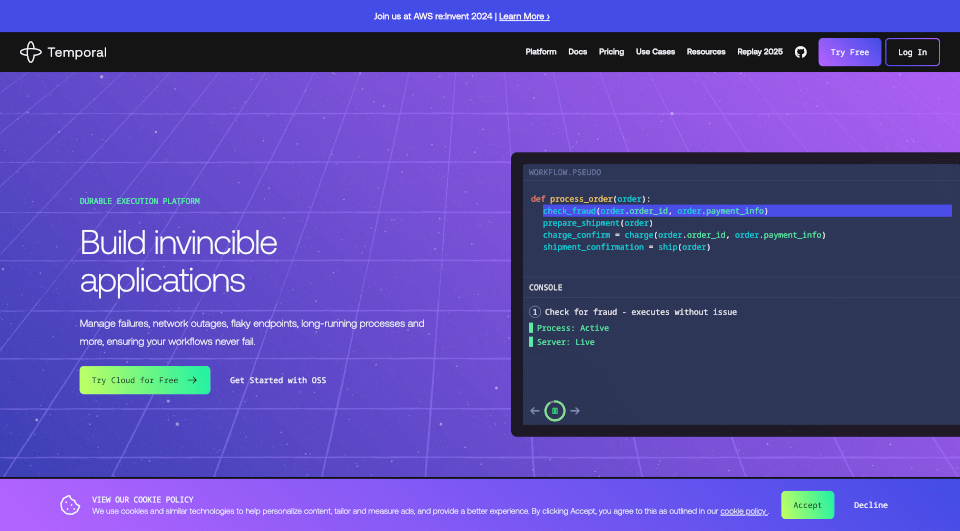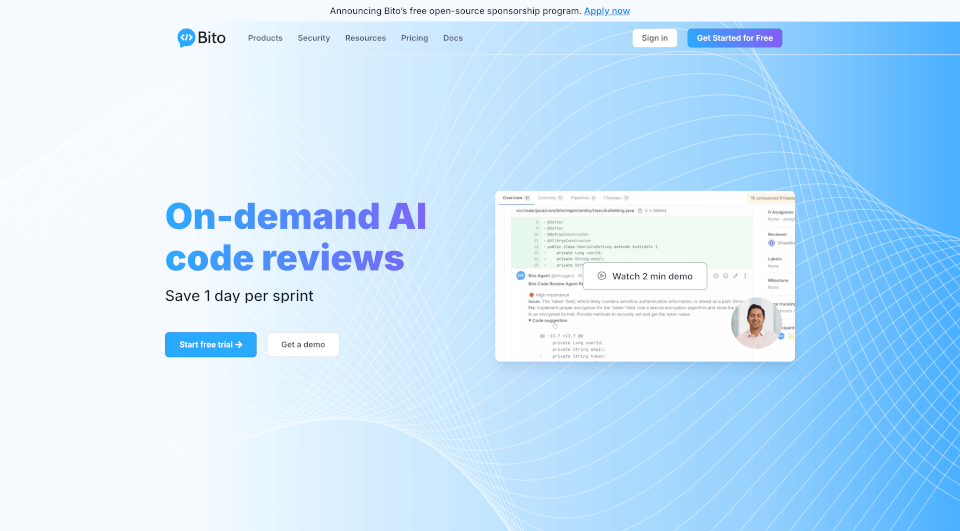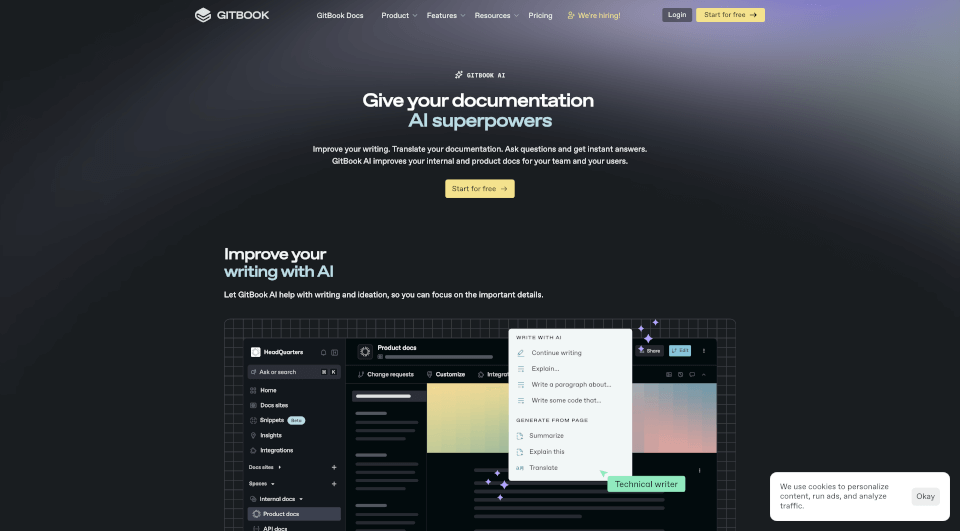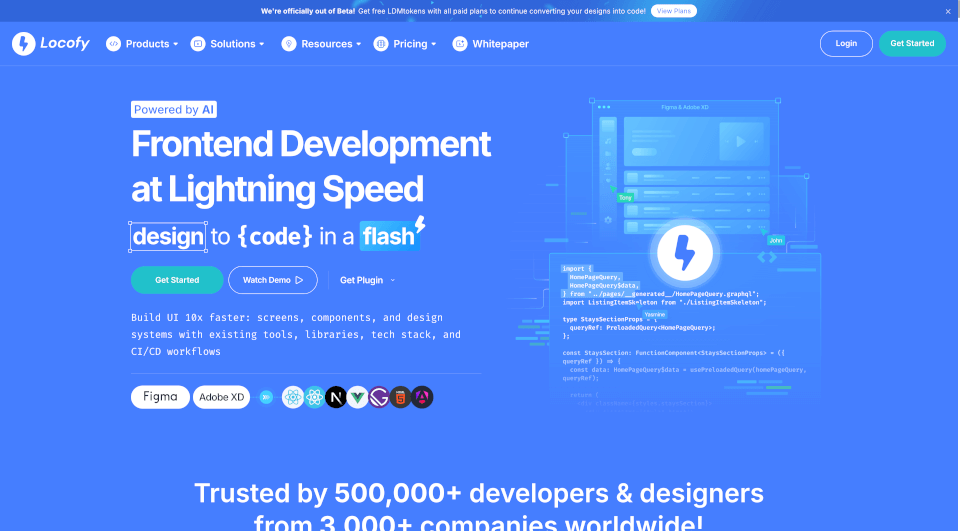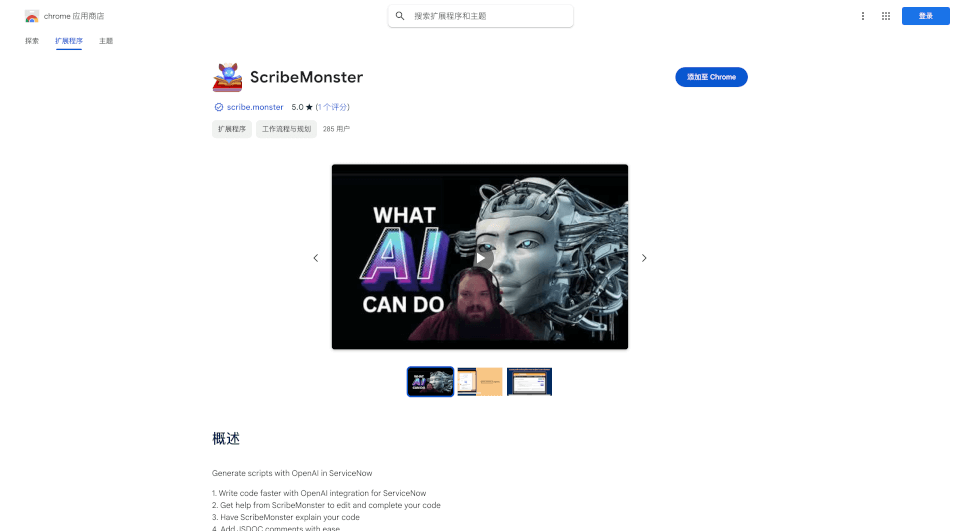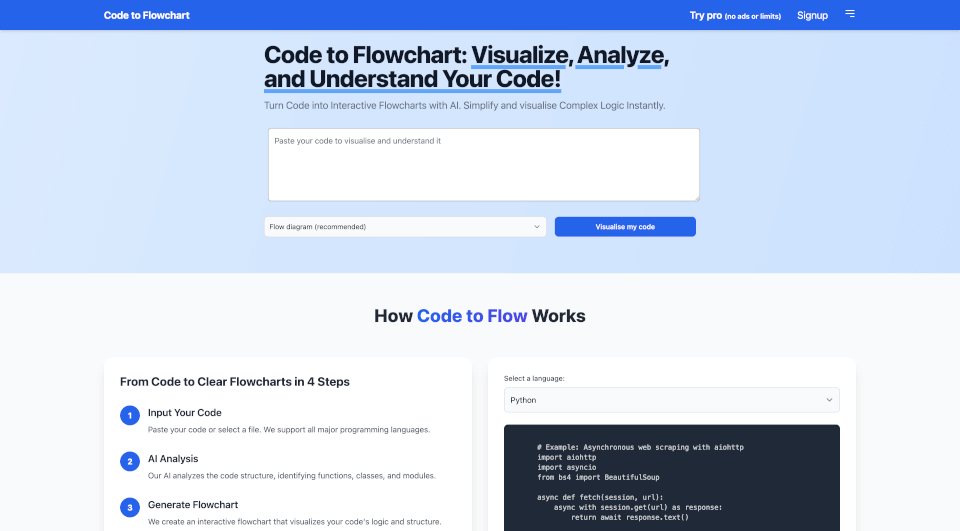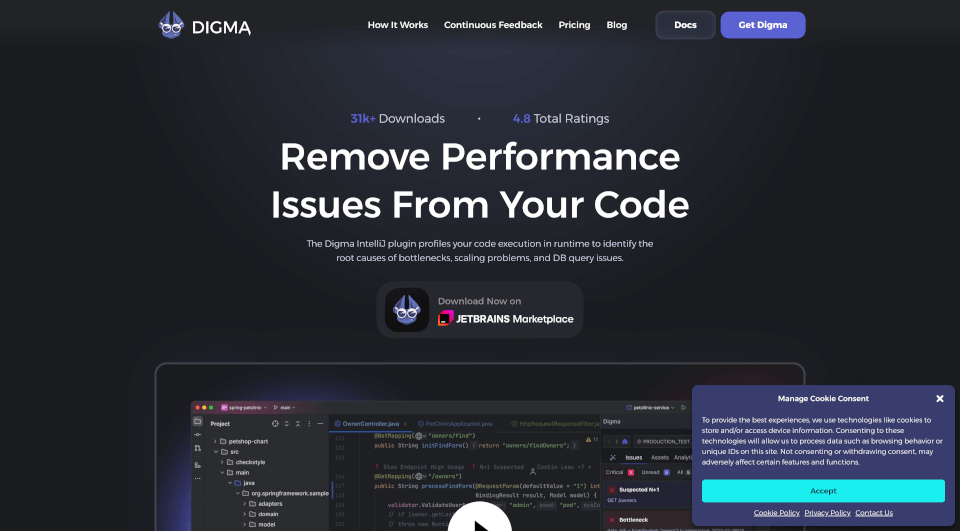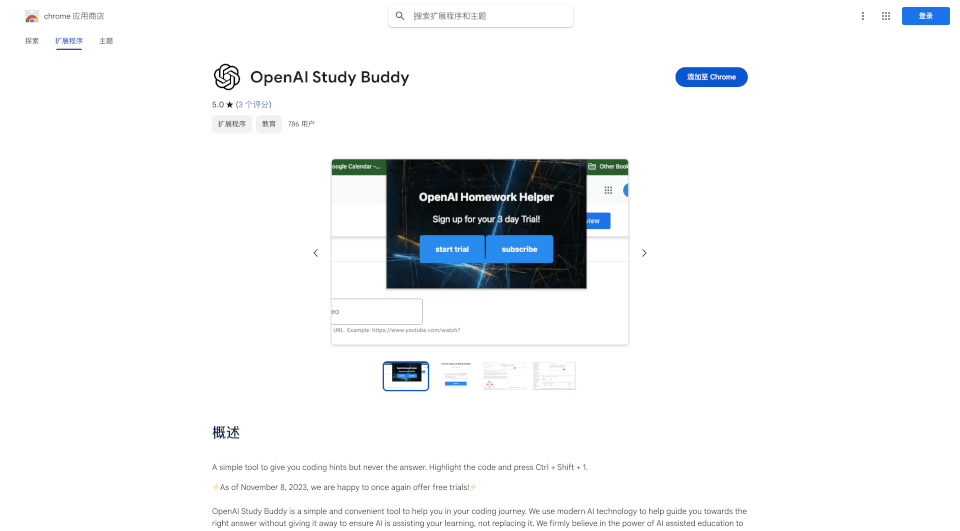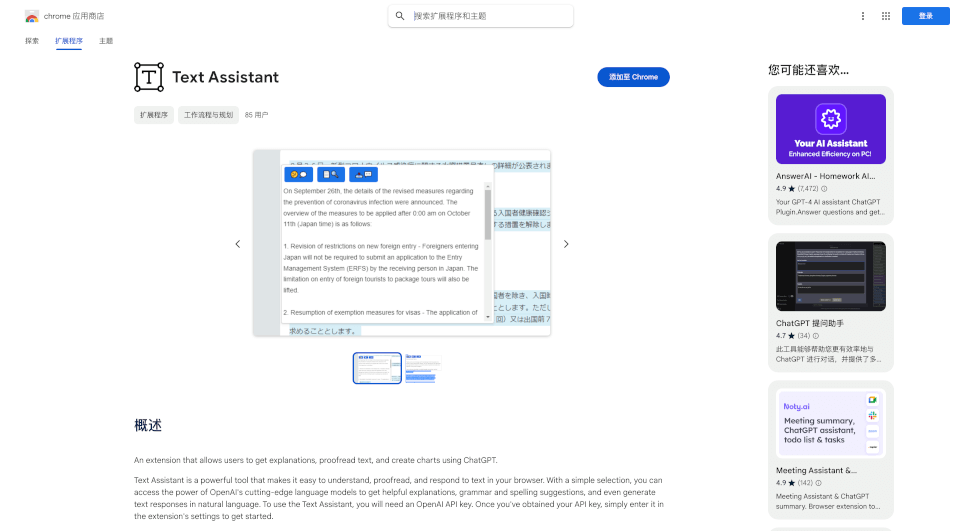What is Temporal Technologies?
Temporal is an open-source durable execution platform designed to help developers build invincible applications that can withstand various challenges like network outages and failures. By abstracting the complexity of scalable distributed systems, Temporal allows users to focus on delivering reliable features faster, ensuring that workflows never fail.
What are the features of Temporal Technologies?
Temporal is equipped with a range of powerful features that streamline the development process and enhance application reliability:
-
Durable Execution: It ensures that no workflow instance will ever fail, regardless of what external issues occur. This resilience allows developers to maintain consistent operation under varying circumstances.
-
Built-in Visibility: Every execution is recorded, providing insight into the workflow’s progress and precise state, which aids in debugging and understanding errors better.
-
Simplified Business Logic: Temporal allows developers to focus on their core business logic instead of plumbing and boilerplate code. This reduces development time and increases overall productivity.
-
Fault Tolerance: Temporal inherently increases the fault tolerance of applications by reducing failures by a significant margin (10X to 100X), thanks to its robust recovery capabilities.
-
Open Source Community: As a fully open-source platform, Temporal is supported by both large enterprises and a growing community of developers, providing extensive resources for troubleshooting and enhancement.
What are the characteristics of Temporal Technologies?
Temporal stands out due to its unique characteristics that cater to modern application needs:
-
Language Flexibility: It supports multiple programming languages, enabling polyglot development where various languages can be used within a single service. This flexibility allows teams to leverage existing skills and codebases.
-
Intuitive Workflow Management: Temporal’s design encourages the use of workflows, allowing developers to manage complex distributed transactions and state across services efficiently.
-
Event-driven Architecture Support: Temporals' workflows simplify how applications handle events, promoting a more organized and maintainable programming structure.
-
Comprehensive Development Patterns: Temporal supports various patterns such as SAGA, batch processing, and state machines, allowing a wide array of applications to be realized efficiently.
What are the use cases of Temporal Technologies?
Temporal caters to numerous application scenarios where reliability and complex workflow management are crucial:
-
Order Management: Temporal can streamline order processing systems, handling everything from payment verification to shipment tracking.
-
Payment Processing: By ensuring that financial transactions are reliable, Temporal helps avoid issues that can lead to significant monetary discrepancies.
-
Infrastructure Pipelines: Temporal can manage workflows in infrastructure pipelines, providing robustness to automated deployments or updates.
-
Customer Onboarding: Simplifying the customer onboarding process, Temporal ensures a seamless experience by managing multiple interactions and state transitions without failures.
-
Applied AI Systems: Temporal can be utilized in AI applications where long-running processes or intermittent data retrieval from various APIs can lead to inconsistencies.
How to use Temporal Technologies?
To get started with Temporal, developers can set up their local environment by visiting the official Temporal documentation. Once the environment is ready, follow these high-level steps:
-
Install Temporal SDK: Choose the appropriate SDK for your preferred programming language and install it in your development environment.
-
Create a Workflow: Define your workflow using Temporal's workflow definitions, focusing on the intended business logic.
-
Handle Errors and Retries: Leverage Temporal’s built-in mechanisms to manage error handling and retries, thus eliminating the need for complex recovery logic in your workflow.
-
Deploy Your Service: Deploy your Temporal service to your desired cloud provider or on-premises infrastructure and begin monitoring its operations through Temporal’s visibility features.
